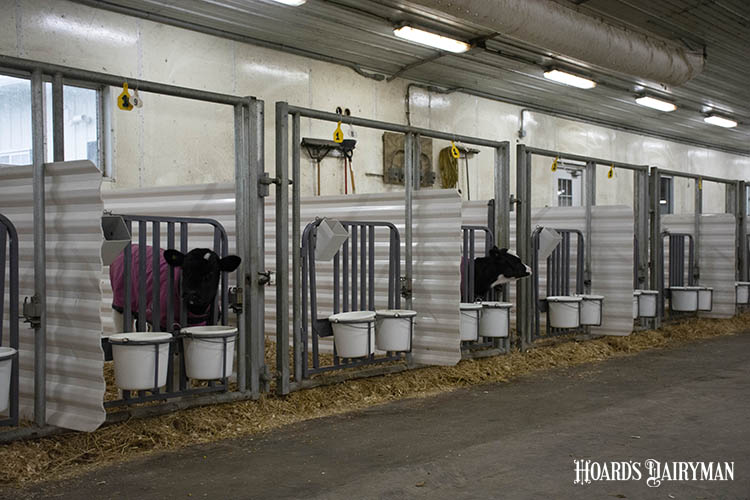
After Bucky Henschel joined his parents, Jeff and Diana, on their dairy near Manawa, Wis., the family started looking at the opportunity to transition to robotic milking. They toured many farms before coming up with a design for their six-row, tunnel ventilated freestall barn that houses their 400 milking cows and six robots.

Once the milking herd moved to the new barn, the Henschels quickly began remodeling their tie stall barn. After a barn fire in 2002, they had built a 100-cow tie stall barn with tunnel ventilation. Not wanting that relatively new building to stand idle, they decided to convert it into calf and prefresh cow housing.
The barn features 68 individual calf pens that are 4 feet by 8 feet. Calves are bedded with straw and bottle-fed milk replacer. Removable sides and a curb at the back of the pen allow for easy cleaning with a skid steer once calves are weaned and moved on to heifer housing.
On the other end of the building, there are six maternity pens as well as a bedded pack that holds 25 prefresh animals. These cows also have access to an outdoor lot. Cows are moved from the bedded pack to the maternity pens when signs of calving begin.

Having the maternity pens in this building also means that there are more eyes on those cows. Any time people are in the barn tending to the calves, they can easily look over at the maternity pens to check on the cows. “Location, location, location,” is a point Jeff and Bucky emphasized when talking about both these maternity pens and the fresh cow pens, which are located just outside the office in the robot barn. The ability to watch these cows carefully is one key to their effective transition cow program.
The Henschels further explain how this maternity and calf barn fits into their transition cow program in the Hoard’s Dairyman Round Table article, “These farms set cows up for a successful transition.” To learn more, pick up a copy of our January 10, 2023, issue.








